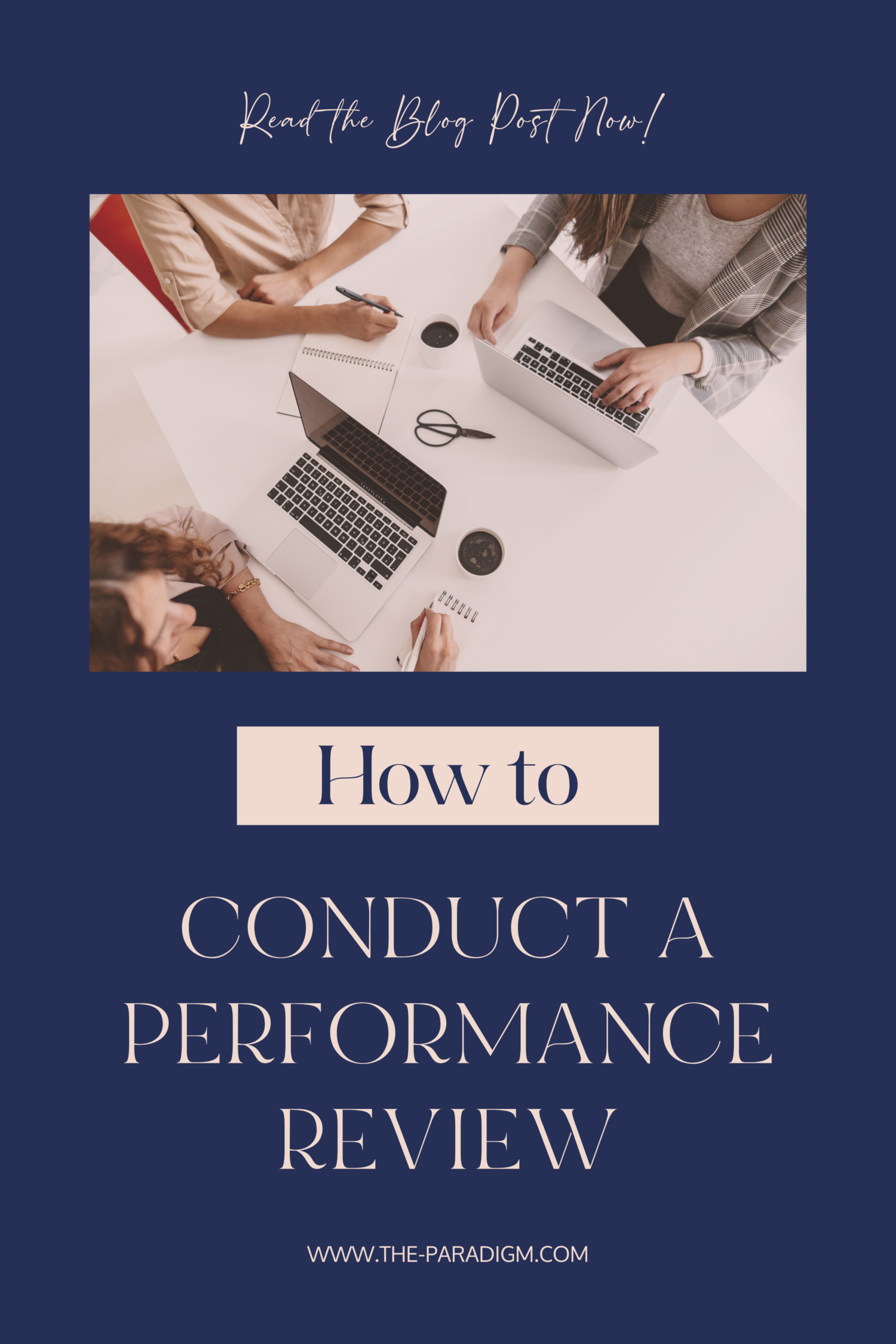December 20, 2021
Written by Kiley VanGilder, Lead HR and Operations Strategist at Paradigm People Operations Consulting
I know, I know… you probably want to crawl under your desk and completely avoid the topic of performance evaluations. Whether you have been on the giving or receiving end of a performance evaluation, you likely have felt the stress inducing feelings associated with the topic… Probably even more so if you’ve worked in corporate America. But I’m here to tell you, it does not and SHOULD NOT feel that way when conducted properly! So let’s dive in to performance evaluation proper etiquette for your badass, ready to break the corporate trauma chains, business!
Creating a safe space for employees begins at the very beginning of building a company. Before we can roll-out a performance evaluation that doesn’t induce stress, sweat, and even tears (yes, this has really happened), we must first create a workplace culture that protects our employees and gives them a space to provide and receive constructive feedback in a healthy manner.
The objective of a performance evaluation should be to bring about a productive and impactful conversation that benefits the engagement of the employee, the awareness of strengths and areas of opportunity, and to cultivate a relationship between the manager and employee.
When built properly company cultures can foster a learning environment that welcomes feedback and growth. That way, when it does come time to have the performance evaluation chit chat, both parties are feeling confident and ready to have a professional conversation.
What A Performance Evaluation Is & What A Performance Evaluation Is Not
It IS:
- A meeting with a two way conversation.
- A time for employees to reflect and review their work honestly.
- A time for managers to provide constructive feedback, and also highlight the positives.
- A time for employers and employees to set measurable goals for the next year.
It IS NOT:
- A one way conversation.
- The time to blind-side employees and bring up poor performance for the first time.
- A one-way top down performance evaluation where employers talk the entire time and do not allow employee feedback.
- A time to write up an employee or provide performance improvement plans.
- A meeting that creates tension, uneasiness, or hard feelings.
Creating a 360-degree performance evaluation is ideal to aid in both productivity and workplace culture. This type of performance evaluation allows an employee to review themselves and also offers space to receive managerial review as well. When we incorporate self-reflection in performance evaluations, it often give an employee time to sit back and truly reflect on the work they have done over a given time period and provide honest feedback. It also creates a two way dialect during the meeting, which in turn creates a more relaxed and constructive atmosphere that both employer and employee can benefit from.
The Process of The Performance Evaluation
The end of the year is quickly coming up, and your Google calendar notifies you that its time to send out annual performance evaluations. You think to yourself, lets kick some performance evaluation A$$ ;). Ok but really, because you and your rockstar team have properly prepared for this the entire year, and you have created an open and safe workplace that has incorporated constructive feedback as a part of the culture, you are ready to roll them out, no problemo!
First things First
It’s time to talk to the crew that works closest with employee: the management team. It’s best practice for the employee’s manager to complete the evaluation and conduct the meeting. Managers should be well aware of their employee’s performance throughout the year, and when it comes time to evaluate employees work, they are more likely to be able to provide the most accurate and useful information, more than anyone else in the company. I encourage employers to keep a running list in employees’ files throughout the year of notable performances, both positive and not so positive, so that they have a quick recap and can speak to the cumulative performance of the review period, and not just the most recent months. It also lets the employee know that their work is important and being noticed/remembered! Recognizing employees for past accomplishments in a formal setting is a great way to build a relationship that is mutually beneficial to the employee and the team.
Managers can also seek out feedback from customers and clients who work closely with the employee. We do not recommending surveying subordinates during the performance evaluation process. There is a thin line between toxic gossip and undermining when in a position of authority.
Send Out Self Evaluations
After making sure the management team is on the same page and has a timeline in place, it’s time to send the performance evaluations out to employees. Ideally, its nice to give each employee approximately an hour to complete their review during work hours. This gives them space and time to truly reflect on their performance. Send evaluations approximately 2 weeks before you plan to hold a meeting. After completion, have the employee return the completed evaluation to you.
I often try to hold off on viewing the employee’s completed portion until I complete my portion of the review. It feels less biased when done this way, and I always like to see if our thoughts on performance overlap anywhere throughout.
During the next two weeks, management completes the evaluation based on their documentation and knowledge of the employee’s performance. Providing examples and detailed reasons as to why employees receive the rating they did is important, and also gives the manager speaking points if the employee has questions. It also allows the employee to understand where their rating came from, and not leave the meeting questioning their work or their manager.
I often try to hold off on viewing the employee’s completed portion until I complete my portion of the review. It feels less biased when done this way, and I always like to see if our thoughts on performance overlap anywhere throughout.
Kiley VanGilder
Once both evaluations are complete, it’s time to schedule your meeting to review the performance evaluation together. I give the entire evaluation to the employee a few hours before the meeting so that they have time to review and come to the meeting with any questions. If there are any tough points in the evaluation, it allows the employee time to process the information before entering the meeting. It usually feels much less congested during the meeting when done this way.
Conducting The Meeting
Once in the meeting, allow the employee to review their ratings and comments of themselves. This helps calm any nerves that might be building, and also lets the employee feel heard. After the employee is finished it’s the managers turn to discuss the overall performance evaluation and discuss notable information within it. Remember to always keep a kind tone, and provide feedback in a constructive way.
As you are wrapping up the meeting, you can collaborate on some measurable goals to achieve in the following year, and also discuss any compensation changes.
Final Thoughts
Performance evaluations are supposed to be constructive, and come from a good place. If an employee is underperforming, they should be aware of this prior to this meeting. The same goes for positive performance! These are not meant to be meetings where employees feel blind-sided or confused, and if this is happening, it’s important to self-reflect and incorporate some new practices.
We promise you will see a a change in the workplace if an employee feels valued and not targeted. We hope this article was valuable information for you and your team and can help you confidently conduct performance evaluations moving forward with less headache and stress!
If you want to tap into our HR+Management brains some more, join us!

